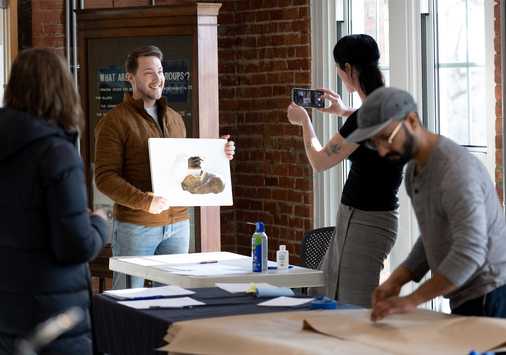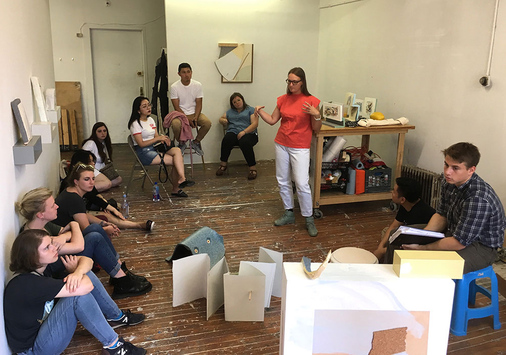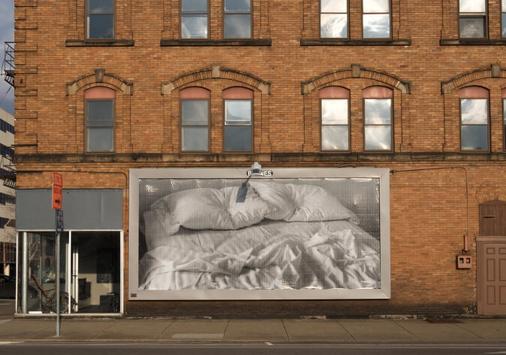
During an artist’s residency at Kendal senior living community, studio art major Lexie Dungan ’19 gained new insight into the accessibility of art.
Lexie shares her story:
I was excited when I first heard of the opportunity to be an artist in residence at Kendal at Granville. I’ve always been a very social person who loves involving communities in art. Going into the summer I had many ideas and expectations, with a plan to shape the program and how I wanted the events to connect. I was able to see some of my ideas in action, and while some didn’t pan out the way I had hoped, others were extremely successful.
Talking and engaging with the residents I found that they are more interested in learning about the process of my work in animation and comics rather than making work themselves. They also love performances. My biggest success was inviting two talented jazz musicians to perform an hour-long concert for the residents, who kept turning around and mouthing “thank you” to me.
My animation work was another avenue to find common ground. A resident had expressed interest in learning about stop-motion animation, and I brought all my gear to her home. It was my first time getting to truly meet her and I stayed for two hours. As I was leaving, she told me something simple but incredibly sweet. She said, “I’ll remember you.” One thing you learn when living with older residents is that memory is incredibly precious. Hearing those words meant so much to me.
As I formed relationships with the residents, my focus became less about making art and more about creating positive experiences for the residents. I definitely have not made as much artwork as I initially thought I would, but my residency has had a large influence on my approach. I always think about accessibility in my work, but there’s a lot of aspects to think about when it comes to accessibility in visual art.
One woman, who has lost most of her vision, reframed how I think about my work. Since visual art depends on vision, I hadn’t thought about how to make it accessible to someone who can’t see very well. One day she had looked at my painting and told me that she could actually make out some of what I had painted because she can see high degrees of contrast. For instance, she said that she can’t see faces very well because they don’t have much contrast. This moment got me thinking about painting portraits in high contrast colors to see if I could create a face that she could recognize.
I’ve had such a positive experience in my residency. The residents are kind, welcoming and curious about what I have to offer.














